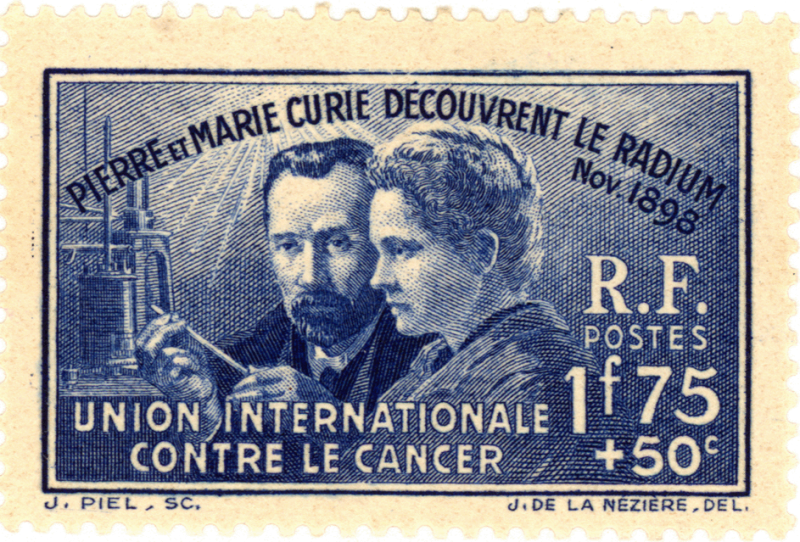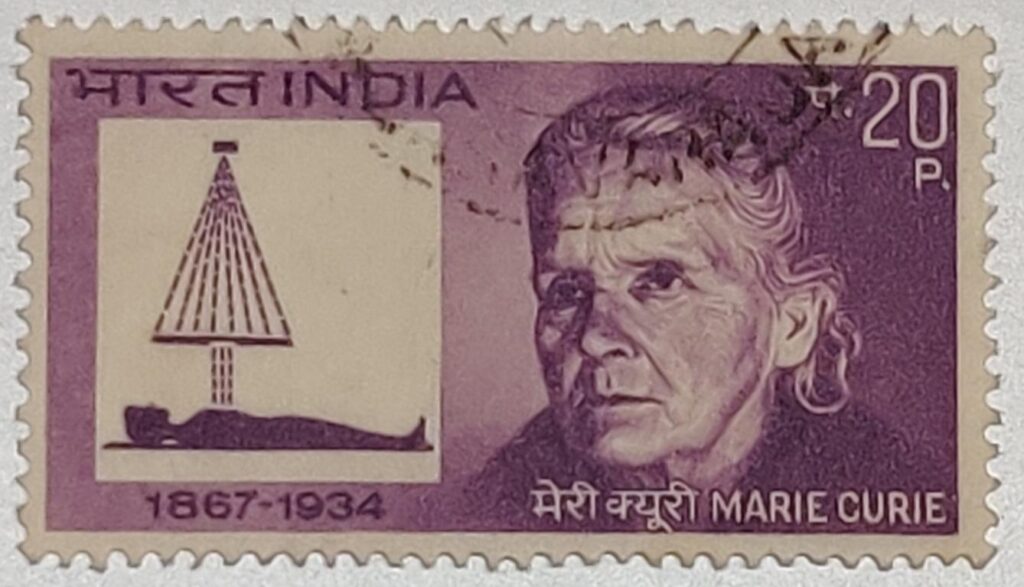
A few days before the Christmas of 1898, Pierre Curie scrawled the word ‘radium’ in his notebook as the name for a new element he and his wife Marie had brought laboriously to light in their ramshackle laboratory in Paris.
Radium is a brilliant white, luminescent, rare and highly radioactive metallic element. The name comes from the Latin word radius, meaning ‘ray’. The notebook in which the name first appears is still highly radioactive and dangerous.
Pierre Curie was a Parisian doctor’s son, born in 1859, who studied at the Sorbonne and was appointed head of the laboratory at the School of Physics and Chemistry in Paris in 1882.
Marie Curie was a Pole, who started life in Warsaw as Maria Sklodowska in 1867, the daughter of a teacher of maths and physics. Prodigiously bright and dedicated, she went to Paris in 1891 to study science and live in a Latin Quarter garret on tea and bread and butter. She met Pierre and they fell in love and were married in 1895, when she was twenty-seven and he thirty-six. It was a happy partnership of two people absorbed in science and each other.
Marie started working in a storage space on the ground floor of the Physics and Chemistry school where Pierre was teaching. It had brick walls, one or two rickety chairs and a few wooden worktables. They built their own ionisation chamber out of wooden grocery crates. Marie sat at one of the worktables with a flimsy apparatus of rods, cylinders and wires.

On February 17th, 1898, she tested a sample of heavy black pitchblende (a naturally-occurring mineral containing uranium), which she found was emitting unexpectedly strong radiation.
Her husband, who, meanwhile, had been turned down for a professorship at the Sorbonne, joined her to continue the experiments in which the Curies laid the foundations of nuclear physics.
By July they had discovered an element they christened ‘polonium’ in compliment to Marie’s Polish homeland (Marie also coined the ominous term ‘radioactivity’).
Polonium, however, did not account for all the pitchblende’s radiation. After a summer holiday break in the Auvergne, bicycling and playing with their baby daughter Irène, the Curies returned to their experiment. They announced their discovery of radium in a paper read to the French Academy of Sciences on December 26th, 1898, which informed that august body of ‘a new strongly radioactive substance contained in pitchblende’.
The unit of radioactivity was eventually named the ‘curie’ in honour of Pierre, who was tragically killed in a Paris street accident in 1906, when he was only forty-six.
Marie worked on, and the Curie family accumulated Nobel prizes in the most astonishing quantities. Pierre and Marie had won the prize for physics in 1903 jointly with Henri Becquerel. Marie won the Nobel prize for chemistry by herself in 1911 (she is still the only person to have been awarded the prizes for both physics and chemistry). Their daughter Irène married the French physicist Frederic Joliot and she and her husband won the Nobel prize for chemistry in 1935 for their discovery that radioactivity could be produced artificially in the laboratory. The year before, Marie Curie had died, aged sixty-six, of leukemia caused by radiation.
Richard Cavendish | Published in History Today Volume 48 Issue 12 December 1998
www.historytoday.com
Once, an American newspaperman tracked the Curies down to a remote cottage in Brittany where they were vacationing. He found a rather dowdy woman sitting outside the door. “Are you the housekeeper?” he began.
“Yes.”
“Is your mistress inside?”
“No.”
“Will she be back soon?”
“I don’t think so.”
The reporter sat down. “Can you tell me something confidential about your mistress?” he went on.
“Madame Curie has only one message that she likes to be given to reporters,” said Marie Curie. “That is: be less curious about people and more curious about ideas.”
Source: http://pawprints.kashalinka.com
Pic of 1938 French commemorative postage stamp of Pierre and Mary Curie courtesy: https://www.phil-quest.com/
